By Charlie Paullin, Virginia Mercury
Think back to being a kid, and imagine how cool it would have been to find a shark tooth in the sand.
One island in Virginia with a collection of those fossils from the ocean’s top predator may be gone in a matter of decades, preventing future generations from making such discoveries.
“I started going to Shark Tooth Island when I was 12 years old, hunting shark teeth,” said John P. Tippett, an adjunct professor at the University of Mary Washington. “I’ve seen that island disappear over my lifespan. It’s a dramatic change from what it was like when I was younger.”
Tippett and Kate Stoneman, a rising junior and research assistant at UMW, are trying to predict when the island in the Potomac River — formally named Hollis Island but colloquially called Shark Tooth Island — will disappear, and why. They say climate change is a key factor.
“This is a local landmark that people love to visit,” said Stoneman. “I want to show them that climate change is going to affect you on this personal level, whether you like it or not because it’s what’s happening.”
Barrier islands
About an hour east of Fredericksburg near Westmoreland State Park, the private Shark Tooth Island is a barrier island, much like the Outer Banks and northeastern parts of Virginia’s Eastern Shores.
Barrier islands are formed by tides and wind patterns pushing sand in certain areas that build up into a sandbar that eventually becomes big enough to be an island.
The sand that forms the island picks up the teeth lost by smaller sharks, which in the Potomac River can include dogfish and bull sharks, hence the island’s nickname.
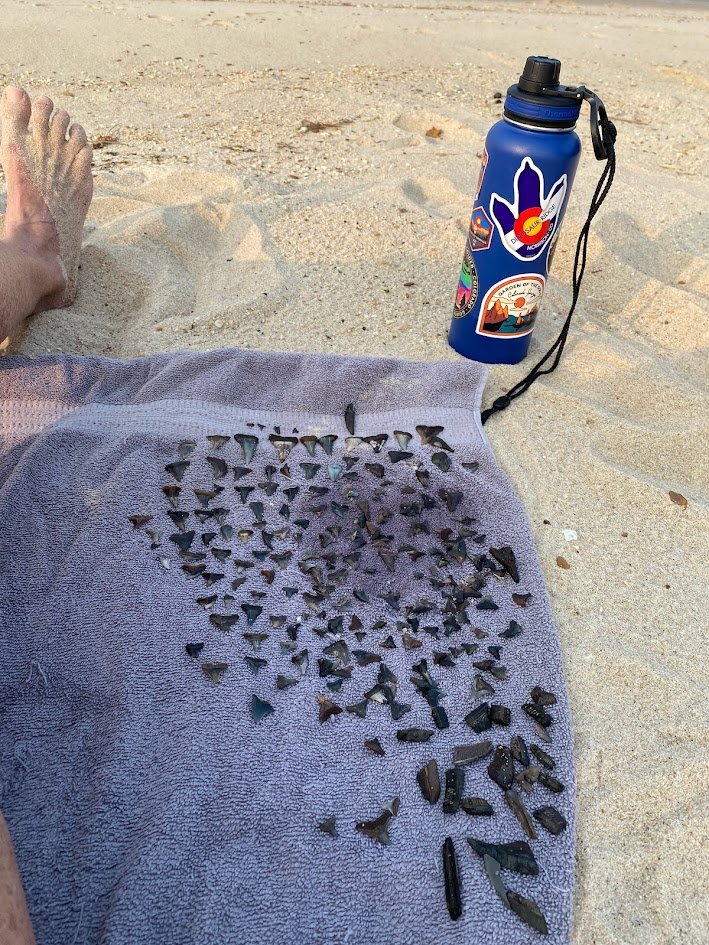
Because of the drifty nature of how barrier islands are formed, they can quickly disappear. If the island vanishes, then a natural resource that serves as a recreation spot and can also maintain water quality and coastlines by absorbing wave energy to prevent tides from causing erosion will be gone, too.
The Causes
Tippett and Stonemen are looking at the loss of the island from two angles: sea level rise and land subsidence.
Humans burning fossil fuels that release heat-trapping greenhouse gasses are heating global temperatures and contributing to rising waters.
“This is going to melt our land ice, melt our glaciers,” Stoneman said. “Also, heating our atmosphere, it’s going to warm up our oceans. As the water heats up, it starts to expand. That’s also going to increase the volume in the ocean.”
On the land sinking aspect, humans are involved, too: they pull water out of the Potomac Aquifer, the pool of groundwater below the earth’s surface in the region.
“Sediment is now compacting down into that space that water used to be in,” Stoneman said. “This is coming from industries, agriculture, and coastal wells all sucking water out of our aquifers faster than the recharge rate.”
And, last but not least, the sinking island is a phenomenon of glacial isostatic adjustment, “kind of a mouthful term,” Stoneman said.
“During the last ice age, there was a giant ice sheet covering northern North America from Canada down into around Pennsylvania, not where the island is itself,” said Stoneman. He explained that the heavy ice sheet pushed land in the north down, which forced land on the coast up.
“When that ice sheet eventually melted, the land in the north then wanted to readjust back to where it used to sit,” Stoneman continued. “The land where the island is on the coast is now going to sink back down.”
The Research
Tippet and Stoneman’s research included compiling previous findings, figuring out how much land had already been lost, and conducting their fieldwork, which involved tromping around the island in waders.
In 2013, the United States Geological Survey found that Shark Tooth Island was being lost to sea level rise at a rate of about 1.8 millimeters a year.
Additional data from that USGS study, which examined the water levels of the Potomac Aquifer, found that the land Shark Tooth Island sits on was subsiding at a rate of 2.1 millimeters a year.
Combining those two figures equals a total water level increase of about 3.9 millimeters a year, or “1.5 inches every 10 years,” Stoneman said.
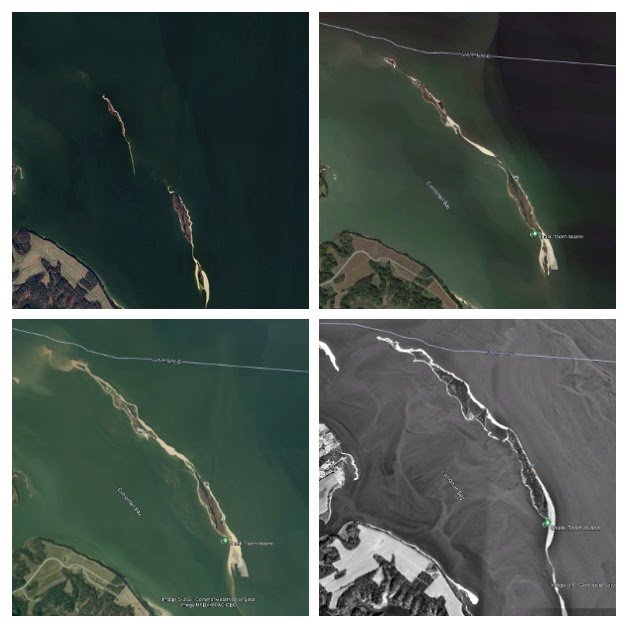
As verification of the land loss, Stoneman added she reviewed pictures of the island from 1994 to 2024, calculated how much vegetation each one had, and found that in those 30 years, the island lost about 32.4 acres.
“That was kind of the big start for our project to show that the island is getting so much smaller,” Stoneman said.
Then, to calculate the year when the island will be fully submerged, Stoneman and a classmate went out on the island for three hours in October and then with another classmate for one hour in May, armed with a theodolite, the surveying tool that can usually be seen along roadways, and a long poll to find the highest point of the island.
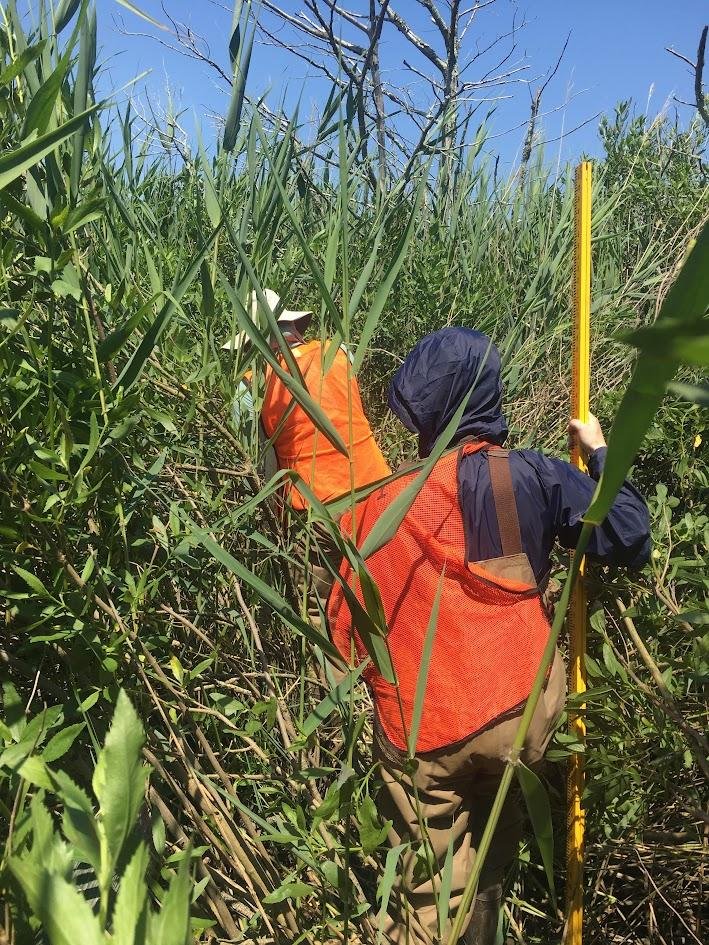
But unlike surveying flat, paved roadways, the two students had to walk into the vegetation consisting of the invasive species phragmites that they needed to push down with the collapsible pole. Then they had to deal with pollen, avoid an old hunting blind and an old building, and make their way out of the tree line before getting to a clearing to take the measurements.
“I asked for a machete. Mr. Tippet did not provide me with one,” Stoneman said. “It was a lot, but it was important. It was important to what we were doing, so it was going to get done
So What’s the Answer?
“We’re crunching the numbers,” Tippet said, adding that the highest points of elevation they found were a “few inches” above mean high tide, the highest point the water rises to before receding into the ocean.
“And…we’re looking at a relative sea level rise rate of an inch and a half every 10 years,” he continued. “So you can kind of get a sense from that.”
A complicating factor is the dynamic nature of barrier islands. Increasingly intense rainfall may push more dirt out into the ocean that will “maybe” allow the island to shoal back up, but the sea level rise rate may increase and consume the island at a faster rate.
“But clearly, looking at the data right now, the island’s losing,” said Tippett.
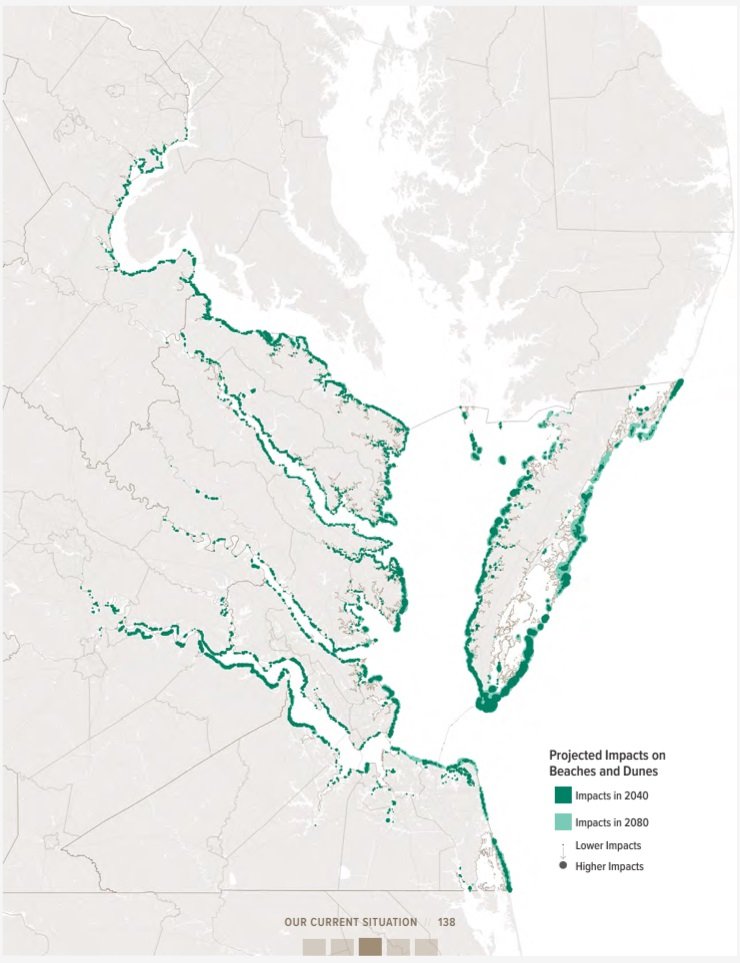
State officials are aware of the loss of barrier islands, marshes, and dunes. Before the creation of a Chief Resilience Officer this past legislative session to better coordinate flooding matters, the state produced The Virginia Coastal Resilience Master Plan, which is due to be updated at the end of this year.
By 2080, the loss of beach and dune features, including those in the Eastern Shore region, is “projected to reach 3,800 acres, a 38% loss of existing habitat,” according to the plan.
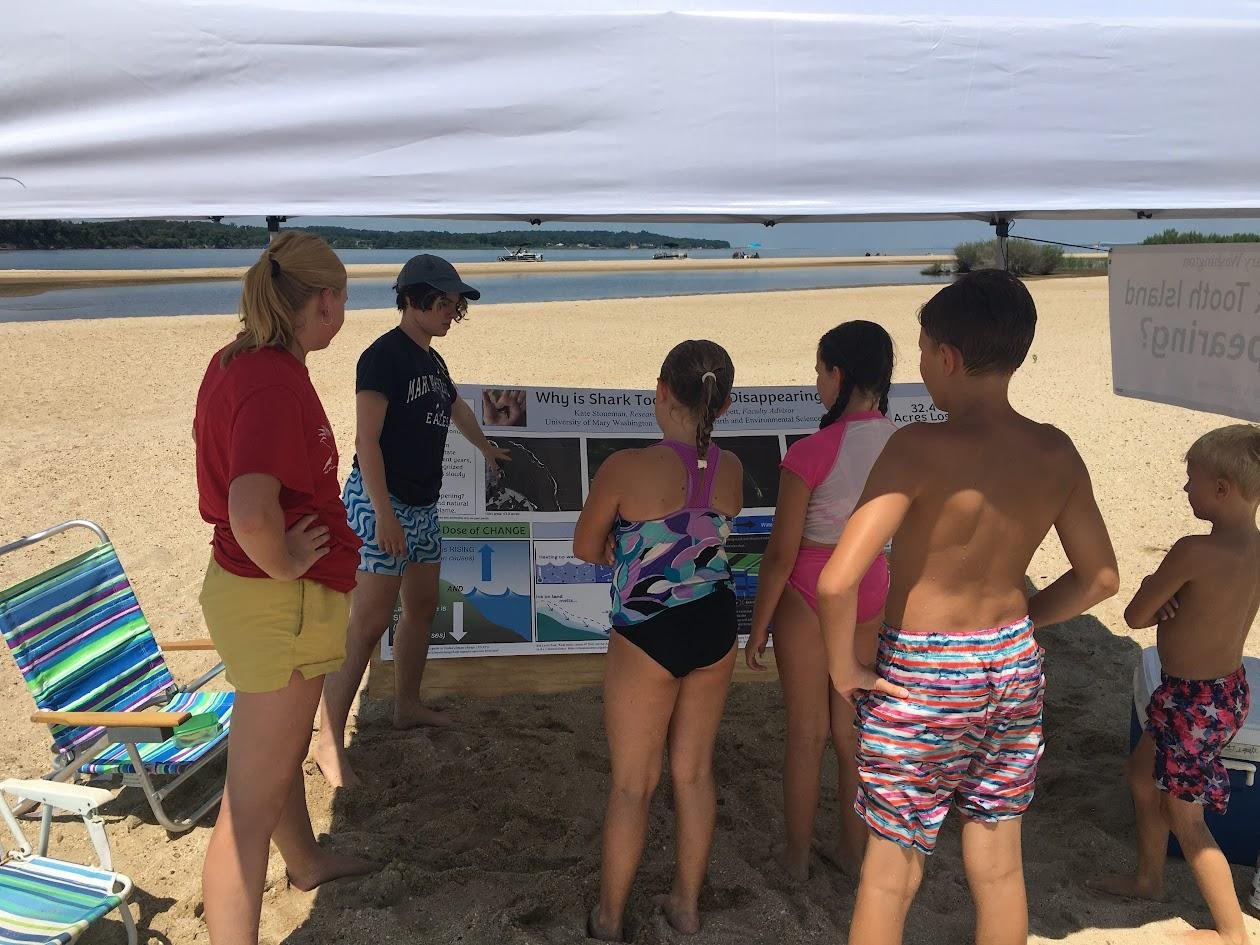
But the research isn’t quite intended to influence policy at the moment, Tippet said.
“There’s a whole lot of misinformation, a whole lot of folks who believe [climate change isn’t] not real, or not that bad,” Tippet said. “What we’re doing here is trying to address that part. We can’t make change at the policy level until the people who vote are behind it.”
Virginia Mercury is part of States Newsroom, a nonprofit news network supported by grants and a coalition of donors as a 501c(3) public charity. Virginia Mercury maintains editorial independence. Contact Editor Samantha Willis for questions: info@virginiamercury.com. Follow Virginia Mercury on Facebook and X.
